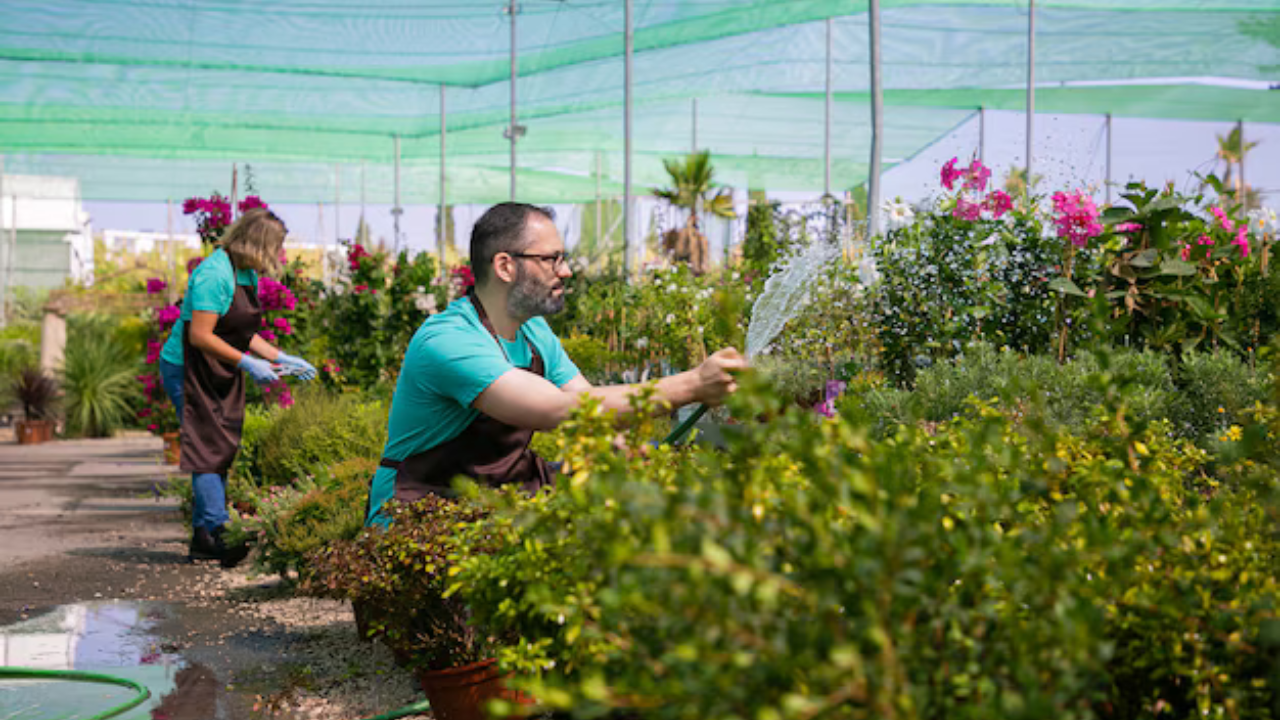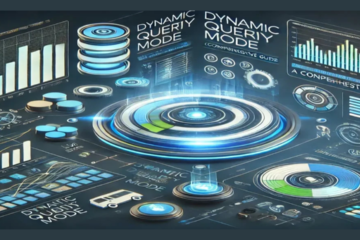Introduction
Garden edging is more than just a visual enhancement for your outdoor space; it plays a critical role in landscaping, providing both practical and aesthetic benefits. Understanding the financial aspects of garden edging is essential to making informed choices and ensuring your budget is well-managed. At GardenEdgingExpert.com/finance, we offer expert insights into the financial considerations of garden edging projects, helping you plan effectively from the start to finish. In this article, we’ll walk you through key financial elements of garden edging, from initial costs to long-term value.
What is Garden Edging?
Garden edging involves installing borders or barriers along garden beds, lawns, and pathways. These edges not only serve to define different sections of your garden but also improve its overall structure and appearance. There are several key benefits to installing garden edging:
- Aesthetic Appeal: Garden edging creates clean, defined lines that enhance the visual appeal of your garden, making it look well-organized and polished.
- Functional Benefits: Proper edging helps control soil erosion, keeps grass and weeds from spreading, and maintains the garden’s structure over time.
- Durability: The right edging materials can help retain soil in garden beds and reduce the maintenance required to keep your garden looking neat.
The choice of garden edging material can impact not only the look of your garden but also your budget. That’s why understanding the financial implications is essential when planning your garden design. GardenEdgingExpert.com/finance can guide you through these considerations, ensuring you stay within your desired budget.
Key Financial Considerations for Garden Edging
When it comes to garden edging, there are several financial factors to consider. By planning ahead, you can make decisions that align with both your aesthetic goals and budgetary constraints. Here’s what you need to know:
1. Initial Costs
The first financial aspect of any garden edging project involves the initial costs. This can vary widely depending on several factors:
- Material Costs: The price of materials can differ greatly based on the type of edging you choose. Affordable options, such as plastic or flexible metal, may be suitable for smaller budgets, while premium materials like stone, brick, or custom-designed metal can significantly increase the total cost.
- Installation Costs: The complexity of the design and the type of materials chosen will influence the cost of installation. DIY projects can help lower costs, but hiring professionals for a more sophisticated design or installation might add to the expense.
- Design Complexity: Intricate or custom garden edging designs will often involve higher costs for both materials and labor. A simpler, straight-edged border may be more affordable compared to a more elaborate design with curves or additional landscaping elements.
To estimate your initial costs, GardenEdgingExpert.com/finance offers helpful calculators and tools. These resources allow you to input your garden’s size and desired materials to get a detailed cost breakdown, making it easier to plan and budget effectively.
2. Long-Term Financial Considerations
Beyond the initial costs, it’s important to think about the long-term financial impact of your garden edging project. Consider factors like durability, maintenance, and potential value improvements:
- Durability and Maintenance: Some edging materials require more maintenance than others. For instance, stone or metal may last longer and need fewer repairs, while plastic may degrade over time and need replacing. Choosing a more durable material can lead to savings in the long run.
- Potential for Increased Property Value: Well-maintained garden borders can add curb appeal and may increase the value of your property. Investing in high-quality, aesthetically pleasing edging could provide a return on investment if you decide to sell your home in the future.
3. Budgeting Tips
When working with garden edging finances, staying on budget is key. Here are some practical tips:
- Prioritize Essentials: Start with the most important areas in your garden and focus your budget there. For example, prioritizing the lawn’s edges or main pathways might take precedence over decorative borders for flower beds.
- Mix and Match Materials: You don’t have to use the same material for every border. Mixing different materials can help keep costs down while still achieving a cohesive look.
- Take Advantage of Deals: Look for sales or discounted materials at local hardware stores or online suppliers. GardenEdgingExpert.com/finance also provides resources to help you find the best deals on garden edging materials.
4. Financing Your Garden Edging Project
For larger or more complex garden edging projects, financing options may be available. Explore loans, credit, or payment plans offered by suppliers or financial institutions. GardenEdgingExpert.com/finance offers advice on how to approach financing options and choose the right plan for your needs.
Types of Garden Edging Materials and Their Costs: A Comprehensive Guide
Choosing the right garden edging is crucial for enhancing your garden’s aesthetics and functionality. When it comes to selecting the ideal material, it’s important to understand the cost implications of each option, as well as the maintenance requirements. Below is an in-depth look at various garden edging materials and how their costs compare over time. This guide will also include helpful insights to assist you in making a more informed decision.
1. Plastic Edging: Affordable and Flexible
Plastic garden edging remains one of the most cost-effective choices for homeowners. It is popular due to its affordability and ease of installation. Available in a variety of shapes and sizes, plastic edging can be easily shaped to fit any garden layout, making it an ideal option for DIY projects. While the initial price is low, plastic edging may not offer the same durability as other materials, especially when exposed to the elements over time.
Although plastic edging requires minimal maintenance, it can degrade under prolonged sunlight and weather exposure, leading to potential replacement needs. To learn more about the long-term financial implications of plastic edging, you can explore our cost breakdown at gardenedgingexpert.com/finance.
Cost Considerations: Plastic edging is generally inexpensive upfront, but keep in mind that you may need to replace it every few years, adding to the long-term costs.
2. Metal Edging: Durable and Sleek
Metal edging, including steel and aluminum, provides a modern, streamlined look that is highly durable and resistant to various weather conditions. This type of garden edging is a great investment for those seeking a long-lasting solution that requires little maintenance. While the initial cost may be higher than plastic, metal edging proves to be more cost-effective in the long run due to its durability and longevity.
If you’re looking to improve the appearance of your garden while reducing long-term maintenance costs, metal edging is a solid option. Learn more about how investing in metal edging can impact your finances by visiting gardenedgingexpert.com/finance.
Cost Considerations: The higher initial cost is balanced out by its extended lifespan and minimal upkeep, making it a great investment over time.
3. Stone Edging: Natural Beauty and Longevity
Stone edging is an excellent choice for those looking to achieve a rustic, natural aesthetic in their garden. Stone provides unmatched durability and can withstand harsh weather conditions. However, stone edging tends to be more expensive than plastic or metal, both in terms of material and installation. Despite the higher upfront costs, stone edging is a fantastic long-term investment because it requires minimal maintenance and offers lasting beauty.
Additionally, stone edging can significantly boost your property’s value, making it a desirable choice for homeowners looking to improve their landscape. Discover how stone edging can add both value and savings to your garden by checking out gardenedgingexpert.com/finance.
Cost Considerations: Stone edging can be pricier to install but offers long-lasting durability, requiring little maintenance.
4. Wood Edging: Traditional Charm with Ongoing Maintenance
Wood edging brings a traditional and warm aesthetic to any garden. It’s a low-cost option that can be customized to suit different garden designs. However, one major drawback of wood edging is that it requires regular maintenance to prevent issues such as rot and pest damage. Over time, the cost of upkeep can add up, making wood less cost-effective compared to other materials.
Wooden edges can also be more susceptible to weathering and wear, meaning that you may need to replace them more frequently. If you’re considering wood edging for your garden, make sure to budget for maintenance and replacement costs. For a detailed cost analysis, visit gardenedgingexpert.com/finance.
Cost Considerations: Wood is affordable initially but comes with ongoing maintenance costs that could add up over time.
5. Brick Edging: Timeless and Elegant
Brick edging offers a timeless, elegant look that can complement any garden design. It’s highly durable and capable of withstanding the rigors of outdoor conditions. Bricks are versatile, allowing for various designs and layouts that enhance the overall visual appeal of your garden. However, brick edging typically requires a higher investment for both materials and installation, making it more expensive than options like plastic or wood.
Despite the higher initial cost, brick edging is known for its longevity and minimal maintenance requirements. If you’re seeking a way to elevate the aesthetic of your garden while also increasing your property’s value, brick edging is an excellent choice. To explore how brick edging can be a cost-effective long-term solution, check out our detailed guide at gardenedgingexpert.com/finance.
Cost Considerations: The initial cost is higher, but the durability and aesthetic appeal can justify the investment, especially if you plan to stay in your home for years.
Maintenance Costs: What to Expect
When choosing garden edging, it’s important to consider not only the initial cost but also the maintenance requirements. Each material has different upkeep demands, which can affect the total cost over time. Here’s a quick breakdown of maintenance costs for common edging materials:
- Plastic Edging: Requires minimal maintenance, such as occasional cleaning. However, over time, plastic may become brittle and need replacement, adding to the total cost.
- Metal Edging: Generally low maintenance but may require occasional painting or rust treatment to preserve its appearance.
- Stone Edging: Very low-maintenance; usually, periodic cleaning is all that’s needed to keep stone edging looking great.
- Wood Edging: Requires frequent treatment to prevent rot and pest damage. Wood edging may need to be replaced every few years, which adds to long-term costs.
- Brick Edging: Low-maintenance and durable. Occasional cleaning is usually sufficient to maintain brick edging’s appearance and function.
Understanding the maintenance costs associated with different materials is essential for making an informed decision. For a more detailed analysis of how maintenance affects your budget, visit gardenedgingexpert.com/finance.
Durability and Longevity of Garden Edging Materials
When it comes to garden edging, durability and longevity are essential factors that should not be overlooked. Choosing high-quality materials can save you money over time, even if the initial investment is higher. Durable materials are less prone to damage and need less frequent replacement, leading to long-term cost savings. Below, we explore the lifespan of various garden edging materials:
- Plastic Edging: This is an affordable option that typically lasts several years. However, over time, plastic may degrade due to weather exposure and UV damage.
- Metal Edging: Known for its exceptional durability, metal edging is resistant to various environmental factors such as rust, heat, and moisture. This makes it a long-lasting choice for garden borders.
- Stone Edging: Stone is one of the most durable materials available. It can last for decades and, with proper installation, provides a robust and attractive edging solution for your garden.
- Wood Edging: Wood can add a natural aesthetic to your garden, but its lifespan is typically shorter. It is vulnerable to rot, pests, and environmental factors, which can cause it to deteriorate more quickly.
- Brick Edging: Bricks are highly durable, and when properly installed, they offer long-lasting performance. Their robust nature makes them ideal for heavy-duty garden use.
Choosing durable materials for your garden edging ensures that you minimize the need for replacements and reduce long-term maintenance costs. For more information on which materials offer the best durability and longevity, visit gardenedgingexpert.com/finance for detailed insights.
Impact of Garden Edging on Property Value
Well-chosen and carefully installed garden edging not only enhances the appearance of your garden but can also increase the value of your property. A well-defined garden boundary can attract potential buyers by creating an aesthetically pleasing and organized outdoor space.
If you’re considering how garden edging might influence your property’s market value, gardenedgingexpert.com/finance provides expert guidance on which materials and designs can give you the best return on investment. From metal to stone, various edging options offer different benefits in terms of curb appeal and property value.
Budget-Friendly Tips for Your Garden Edging Project
If you’re looking to enhance your garden’s appearance without breaking the bank, there are several budget-friendly tips you can follow. Here’s how you can manage your garden edging project efficiently while still maintaining high standards:
- DIY Installation By installing your garden edging yourself, you can save significantly on labor costs. Materials such as plastic or wood are suitable for DIY projects and can be installed with minimal experience. However, more complex materials like stone or brick may require professional assistance for proper installation.
- Shop for Discounts Keep an eye out for sales, seasonal promotions, and bulk purchase deals from suppliers. Purchasing garden edging materials at discounted prices can help lower the overall cost of your project.
- Select Affordable Materials Not all garden edging materials are costly. If you’re working with a limited budget, consider opting for more affordable options like plastic, wood, or low-cost metal. These materials can still provide an attractive finish and effective functionality for your garden’s borders.
- Plan Your Design Carefully Planning your garden edging layout in advance can help you avoid unnecessary expenses. Take accurate measurements of your garden area to ensure you only purchase the necessary materials, minimizing waste and saving money in the long run.
- Invest in Quality for Long-Term Savings While some garden edging materials may come with a higher initial cost, opting for high-quality options can lead to long-term savings. Durable materials often require less maintenance and are less likely to need replacement, making them a wise investment. Explore your options and find the right balance between quality and budget.
How GardenEdgingExpert.com/Finance Can Help You Manage Your Garden Edging Budget
When planning a garden edging project, one of the most important aspects to consider is the financial investment. GardenEdgingExpert.com/finance is a comprehensive online resource designed to help you manage the financial aspects of your garden edging projects. Whether you’re looking to estimate costs, compare materials, or find design inspiration, GardenEdgingExpert.com/finance offers valuable tools and insights to guide you through every step of the process.
Key Features of GardenEdgingExpert.com/Finance
1. Cost Estimators:
GardenEdgingExpert.com/finance provides easy-to-use cost estimators that help you determine the initial expenses for your garden edging project. By entering details such as garden size and material preferences, these tools give you a clear estimate of how much your project will cost, allowing you to plan effectively.
2. Budgeting Guides:
Effective budgeting is essential for any garden project. GardenEdgingExpert.com/finance offers expert tips and comprehensive guides on how to manage your garden edging budget. With these resources, you’ll learn how to allocate funds wisely, avoid unexpected expenses, and stick to your budget without sacrificing quality.
3. Material Reviews:
Choosing the right materials for your garden edging is key to balancing cost with quality. GardenEdgingExpert.com/finance offers in-depth reviews of various edging materials, comparing factors such as cost, durability, maintenance, and aesthetic appeal. By understanding these key considerations, you can make an informed decision about the materials that best suit your needs and budget.
4. Design Inspiration:
A well-designed garden edging can enhance the overall appearance of your garden and increase property value. GardenEdgingExpert.com/finance provides a wealth of design ideas and examples to inspire your project. Whether you’re going for a modern, rustic, or traditional look, you’ll find plenty of options that are both beautiful and budget-friendly.
Why Financial Planning is Crucial for Your Garden Edging Project
Understanding the financial aspects of your garden edging project is essential for making informed decisions. GardenEdgingExpert.com/finance helps you take control of your project’s finances by offering practical tools and expert advice. By taking into account the initial costs, long-term maintenance, and durability of materials, you can choose an option that aligns with your budget and adds value to your property.
Proper financial planning ensures that you can achieve a garden edging solution that not only looks great but also remains affordable in the long run. By reviewing the information available at GardenEdgingExpert.com/finance, you’ll have all the resources you need to make financially sound choices that enhance the beauty and value of your garden.
Conclusion
Incorporating garden edging into your landscape is a smart investment, but it requires careful financial planning. With the helpful tools, guides, and reviews available at GardenEdgingExpert.com/finance, you can ensure that your garden edging project is cost-effective and high-quality. Whether you’re just starting or already have a vision in mind, GardenEdgingExpert.com/finance can help you navigate the financial side of your project with confidence, making sure your garden looks stunning while staying within your budget.
FAQs on Garden Edging Costs and Benefits
Q: What factors influence the cost of garden edging?
A: The cost of garden edging is determined by several factors, including the material you choose, the complexity of the installation, the design, and whether you decide to handle the installation yourself or hire a professional. Different materials come with varying costs, and if you hire a contractor, the labor expenses will also affect the total price. To get an accurate estimate tailored to your needs, visit gardenedgingexpert.com/finance, where you can find tools and calculators to help you calculate the cost based on your specific preferences and garden size.
Q: How can I estimate the cost of my garden edging project?
A: One of the best ways to estimate the cost of your garden edging project is by using online tools and calculators. At gardenedgingexpert.com/finance, we offer easy-to-use calculators that consider your garden’s dimensions and preferred materials, giving you an accurate estimate of the total costs. These tools are specifically designed to assist you in planning and budgeting, helping you stay on track financially while achieving the garden look you desire.
Q: Is investing in high-quality garden edging materials worth it?
A: Yes, investing in high-quality garden edging materials can be a wise decision. While the initial cost may be higher than lower-quality options, durable materials can save you money in the long term. High-quality edging materials typically require less maintenance and last longer, reducing the need for frequent replacements. This can result in significant savings and a better overall appearance for your garden. For more insights into budgeting for quality materials, check out our resources on gardenedgingexpert.com/finance.
Q: Can garden edging increase my property’s value?
A: Absolutely! Garden edging is not just about functionality; it can also enhance the aesthetic appeal of your property. A well-designed and professionally installed garden edging can boost the visual appeal of your outdoor space, making your home more attractive to potential buyers. In many cases, the addition of quality garden edging can increase the perceived value of your property, leading to a higher resale price. If you’re considering upgrading your garden for future sales, exploring cost options via gardenedgingexpert.com/finance is a great place to start.
Q: What are the most cost-effective garden edging options?
A: If you’re looking to keep your garden edging project budget-friendly, there are several affordable options available. Plastic and wood edging materials are generally considered the most cost-effective. They provide an excellent balance of affordability, durability, and ease of installation. Both options are ideal for homeowners who want to improve their garden’s look without breaking the bank. For additional budget advice, you can explore the cost estimators on gardenedgingexpert.com/finance to find the best material for your garden needs.
STAY IN TOUCH FOR MORE UPDATES AND ALERTS VISIT: The Touch Cric!




